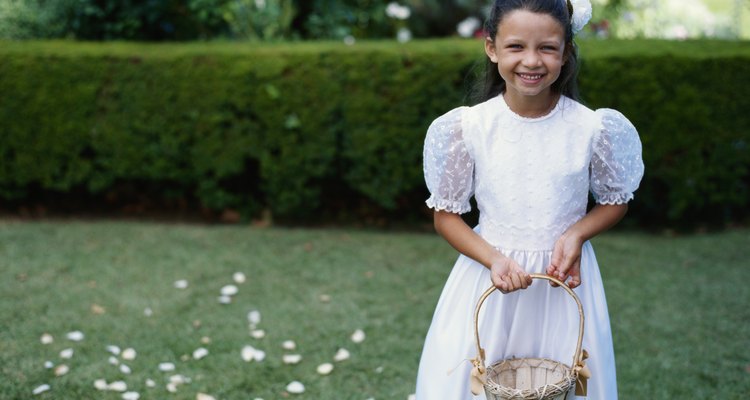
Stockbyte/Stockbyte/Getty Images
The wedding tradition of a flower girl is symbolic in nature. The young girl, usually in a white dress, represents purity. She walks down the aisle in front of the bride, dropping flower petals, which symbolize fertility. The petals are usually red roses. Red is a vibrant color which represents deep passion and love. Symbolically, the flower girl represents the loss of purity to passion, love and fertility.
Time Frame
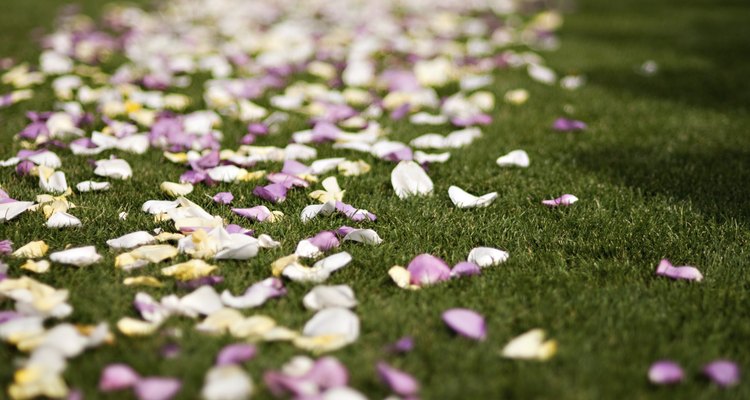
zysman/iStock/Getty Images
In the ceremony, the flower girl always walks in front of the bride. She represents the young and pure girl, who adds sweetness and joy to the ceremony. She throws out the petals, which symbolize the transition of the bride into a loving and passionate wife. Originally, the petals may have also been used to ward off evil spirits, so the flower girl walking in front of the bride would protect her on her wedding day.
History

SAlejandro/iStock/Getty Images
The history of the flower girls goes all the way back to Greek and Roman times. During those times, girls did not scatter flowers, but grain and herbs to represent fertility. Even in the middle ages, young girls would walk in front of the bride, carrying bundles of grain. The tradition of flower baskets came about during the Victorian Era. Little girls dressed in white, carrying baskets of flower petals and flower-covered hoops, which represented eternal love.
Different Cultures

Maria Teijeiro/Photodisc/Getty Images
No matter the culture, the role of the flower girl is about the same. However, there are some variations. In Central America, the flower girl may dress like the other attendants, carry flowers and dance down the aisle with them. In Germany, no other attendants exist except the flower girl and her flowers.
The Petals
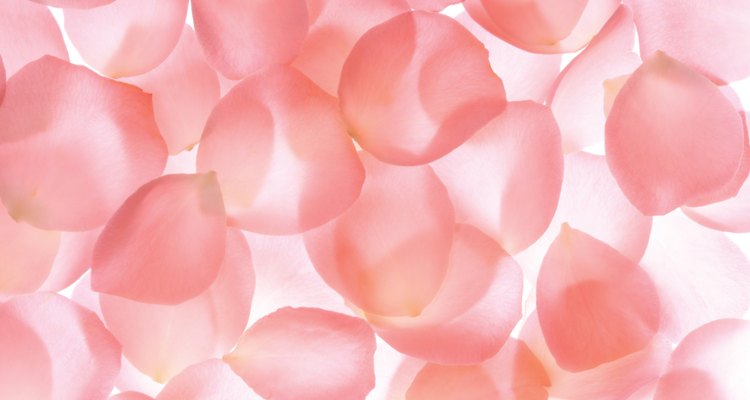
Top Photo Corporation/Top Photo Group/Getty Images
Brides sometimes select colors other than red for the petals. Pink is the next popular color, and it symbolizes sweetness. Orange might also be another appropriate color, and it means warmth and vitality. Violet means serious feelings and is often reserved for meeting the mother of the bride. Blue means hope and confidence, and green represents youth and happiness Colors that are not really appropriate for a wedding are white (for purity), yellow (which often represents jealousy) and black (for death).
Changing Times
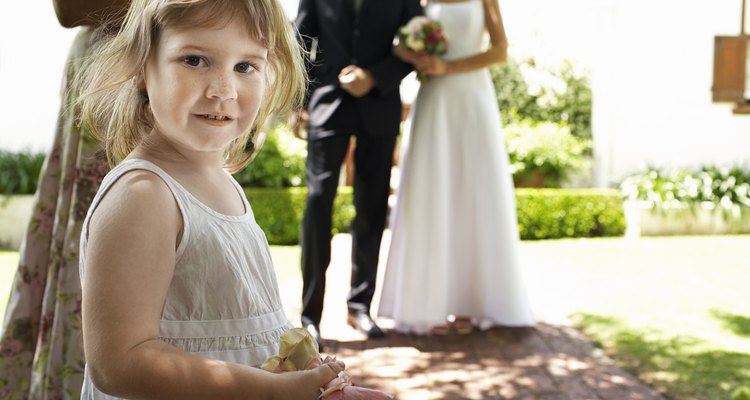
Mike Watson Images/moodboard/Getty Images
As the world changes, so do wedding customs and traditions. Some brides choose to put their flower girls in colored frocks. Some may even be dressed identically to the bride; this is popular with mothers whose daughters are their flower girls, making the occasion special for the little girl as well as her mother. Instead of dropping flower petals, many flower girls blow bubbles going down the aisle. Others throw confetti or carry teddy bears.
Related Articles

What Does a Purple Iris Symbolize?

Quinceanera Requirements

What Is the Symbolic Meaning of a Black ...

How to Honor Your Deceased Mother

What Type of Bouquet Is Appropriate for ...
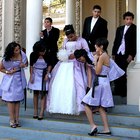
Mexican Quinceanera Traditions

The Meaning of a Flower Girl in a ...

The Meaning of a Single White Rose

Why Do Brides Wear Veils?

Corsage Flowers & Meanings

How to Coordinate the Color of Your ...

What Color Dress Does the Mother of the ...

Traditional Flowers & Plants for a 50th ...

The Meaning of a White Orchid

Flowers for a Sister

What Do Hot Pink and Black Symbolize?

Catholic Confirmation Gifts for Girls

What Are the Family Ties for the Greek ...

What Is the Godparents' Responsibility ...

Ribbon Meanings for a Handfasting ...
Writer Bio
A native Georgian, Katie Eyles has written educational articles since 1995. Her career began with three publications by Teacher Created Materials. She has written informative articles for online companies: Googobits.com and HappyLiving. com. Awards include acceptance to Breadloaf Institute, Black Water Writing Institute, and WIDA Institute.
Photo Credits
Stockbyte/Stockbyte/Getty Images